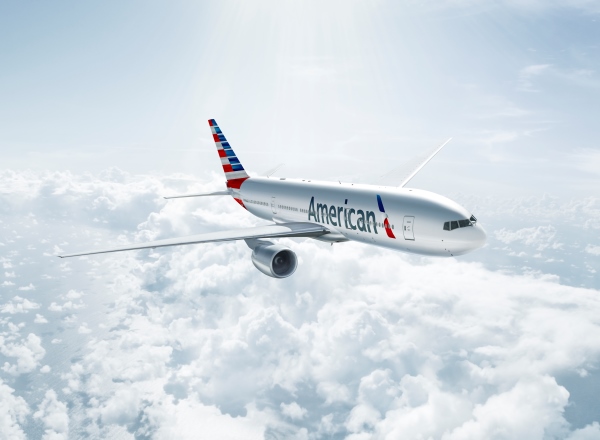Transportation
Upon AMR-U.S. Airways Merger, Do Airlines Remain Overvalued in 2014?
Published:
Last Updated:
The closing of the merger between American Airlines and U.S. Airways closed Monday morning and a new company, American Airlines Group Inc. (NASDAQ: AAL) has emerged and begun trading. This is going to give the entire airline sector some serious pricing power, and the power to jam customers into planes and the right to pile up even more fees. Unfortunately for the airlines, all that good news may already be priced into the airline stocks.
When we sought out a good airlines stock for 2014 recently, the new American Airlines did not exist, and analysts’ consensus target prices for all the airlines we looked at were below the then-current share price. That indicated to us that there was so little upside in airlines stocks that the risk-reward ratio was too large to be very rewarding.
All major airline stocks have had serious gains recently, based on a more willing Department of Justice in this second mega-merger among legacy air carriers.
On its last day of trading last Friday, U.S. Airways stock closed at $22.55. New American Airlines shares opened at $23.95 Monday morning. The consensus price target for U.S. Airways was $29.80, for an upside potential of about 24%. We will have to see how that figure holds up as analysts weigh on after the merger.
United Continental Holdings Inc. (NYSE: UAL) recently hit a new multiyear and post-merger high of $40.19. At $37.64 in early trading Monday, its 52-week range is $20.31 to $40.19, and its market cap is $13.6 billion. The Thomson Reuters consensus price target of around $40.50 is now above the current share price and the 52-week high. The implied gain is about 7.6%. We would point out that the highest analyst price target is up at $50.00, so at least one analyst believes there is a lot more room to run here.
Southwest Airlines Co. (NYSE: LUV) has also been on fire. Its stock is trading near its multiyear high of $18.82. At $18.52, its 52-week range is $9.70 to $18.82. The consensus price target is around $19.10, so the upside potential is about 3.2%. Southwest is now worth $12.9 billion in its market cap. The street high analyst target price is $24.00 for the stock.
Delta Air Lines Inc. (NYSE: DAL) is another airline stock trading near record highs, at $28.73 in a 52-week range of $9.95 to $29.44. Its market cap is about $24.4 billion. The UAL-Continental merger and AMR-U.S. Airways merger may leave Delta as odd-man-out for the legacy carriers. Its merger with Northwest is now ancient history. The consensus price target is currently around $31.70, and $37.00 is the highest price target. The upside potential is 7.9%.
Then there is JetBlue Airways Corp. (NASDAQ: JBLU). JetBlue would be the last major regional or super-regional carrier of any size to go after. At $8.40, the stock recently traded as high as $9.20, versus a 52-week low of only $5.21. The high is the best share price since 2007, and the company’s market value is $2.5 billion. The consensus analyst price target from Thomson Reuters is just over $8.60, but one analyst target price is all the way up at $12.00. JetBlue’s stock is fully valued at its current trading price.
Here are the forward 2014 price-to-earnings (P/E) ratios based on consensus earnings estimates for each of the carriers except new American Airlines:
Spirit Airlines Inc. (NASDAQ: SAVE) is an airline we treat entirely different than other carriers because it is truly the biggest discount airline out there. Its market cap is still around $3.2 billion and it trades at more than 15 times expected 2014 earnings. Sales growth is high here because it is still expanding, and if the legacy carriers all get to bilk passengers then the lowest-fare carrier gets a chance to be a bit less-low, even while remaining the lowest. At $44.32, Spirit has a 52-week range of $16.50 to $46.92. Potential upside at the consensus target price of $51.25 is nearly 16%. For a comparison of expected sales, JetBlue is expected to have 2014 revenue of almost $5.9 billion, versus $1.93 billion for Spirit.
What is happening in the airline sector now is that the industry consolidation is taking away all the consumer empowerment. Airlines can now charge you for a carry-on bag or a checked bag. They can charge you for Internet and Wi-Fi and movies, and on and on.
Airline P/E ratios used to be 5 to 8, but now they are much higher. The airline stock prices may go higher still, but we would warn investors that buying now comes on the heels of major rallying in the stocks. For these stocks to go much higher, logically it will take more than just one or two analyst upgrades.
The New American Airlines could extend the recent rally and lead most airlines analysts to admit that they were far too conservative in recent years and that a permanent and upward valuation paradigm shift has taken place. It is the only airline that shows an upside potential above 20%. This is one of those times that investors must suspend disbelief if they want to chase returns from airlines.
If you’re one of the over 4 Million Americans set to retire this year, you may want to pay attention. Many people have worked their whole lives preparing to retire without ever knowing the answer to the most important question: am I ahead, or behind on my goals?
Don’t make the same mistake. It’s an easy question to answer. A quick conversation with a financial advisor can help you unpack your savings, spending, and goals for your money. With Zoe Financial’s free matching tool, you can connect with trusted financial advisors in minutes.
Why wait? Click here to get started today!
Thank you for reading! Have some feedback for us?
Contact the 24/7 Wall St. editorial team.